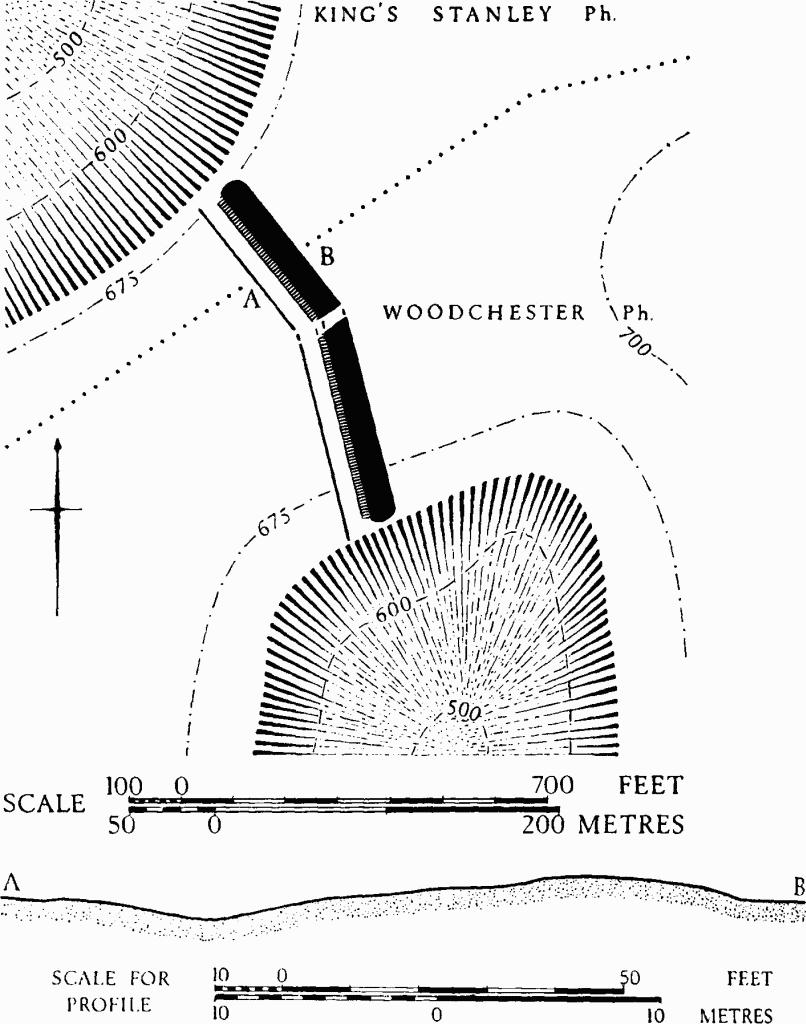Ancient and Historical Monuments in the County of Gloucester Iron Age and Romano-British Monuments in the Gloucestershire Cotswolds. Originally published by Her Majesty's Stationery Office, London, 1976.
This free content was digitised by double rekeying. All rights reserved.
'King's Stanley', in Ancient and Historical Monuments in the County of Gloucester Iron Age and Romano-British Monuments in the Gloucestershire Cotswolds(London, 1976), British History Online https://prod.british-history.ac.uk/rchme/ancient-glos/p70 [accessed 14 February 2025].
'King's Stanley', in Ancient and Historical Monuments in the County of Gloucester Iron Age and Romano-British Monuments in the Gloucestershire Cotswolds(London, 1976), British History Online, accessed February 14, 2025, https://prod.british-history.ac.uk/rchme/ancient-glos/p70.
"King's Stanley". Ancient and Historical Monuments in the County of Gloucester Iron Age and Romano-British Monuments in the Gloucestershire Cotswolds. (London, 1976), British History Online. Web. 14 February 2025. https://prod.british-history.ac.uk/rchme/ancient-glos/p70.
KING'S STANLEY
(13 miles W. of Cirencester)
Romano-British finds recovered from a disturbed area in a prehistoric round barrow near Ivy Lodge (so 81100198), during excavation in 1948–9, comprise part of a bronze fibula of 1st-century type, three bronze coins—Constans (minted 341–5), Valens and illegible (3rd or 4th century)—and five fragments of pottery including samian of the early 3rd century. Four human skeletons accidentally discovered in 1929 may have been secondary Romano-British burials. (fn. 1)
Six uninscribed Roman altars and a coin of Severus Alexander, found in 1781 when a cellar was dug, (fn. 2) are not precisely provenanced. It has been suggested that they come from Stanley House, adjacent to St. George's Church (fn. 3) and to a former Roman building (2). The find has been thought to imply the existence of a temple. (fn. 4) Five of the altars are in the B.M.; three carry representations of Mars as god of agriculture, the fourth depicts a genius and the fifth portrays an armed deity, probably British. (fn. 5) Another altar with a figure of Mars in relief, attributed to King's Stanley, is in Stroud Museum. (fn. 6)
(1) Cross-ridge Dyke (SO 81850205), of Iron Age type, unexcavated, crosses a narrow neck of a long W.-E. ridge which here forms part of the main W. escarpment of the Cotswolds. The N. end of the earthwork lies in King's Stanley, the S. part in Woodchester.
The dyke crosses fairly level ground at about 675 ft. above O.D., but to the E. the ridge is crowned by Bown Hill with an altitude of 735 ft. The earthwork, 720 ft. long, is of regular form throughout its length and comprises a ditch on the W. side, generally 35 ft. across, a berm 15 ft. wide, and a bank 50 ft. wide and up to 3½ ft. high. The N.W.-S.E. course of the N. section changes after 315 ft. with an abrupt turn to W. There is no sign of an original entrance at this point although later traffic has caused the ditch to be filled and has cut through the bank. To the S. of the turn the earthwork is less well preserved.
(2) Roman Building (around so 81000410), in the vicinity of St. George's Church, stood on a slight eminence above marshy ground at about 130 ft. above O.D., some 200 yds. S. of the R. Frome.

King's Stanley. (1) Cross-ridge Dyke. Plan and profile.
A tessellated pavement, cut by the digging of a grave on the E. of the church, apparently extends into the grounds of Stanley House; no details are known. A Romano-British ditch and some pottery have come to light during the excavation of a mediaeval moat on the W. and N.W. of the church. A tile stamped ARVERI is built into the inner wall of the church tower.
Information from Captain H. S. Gracie, R.N.
